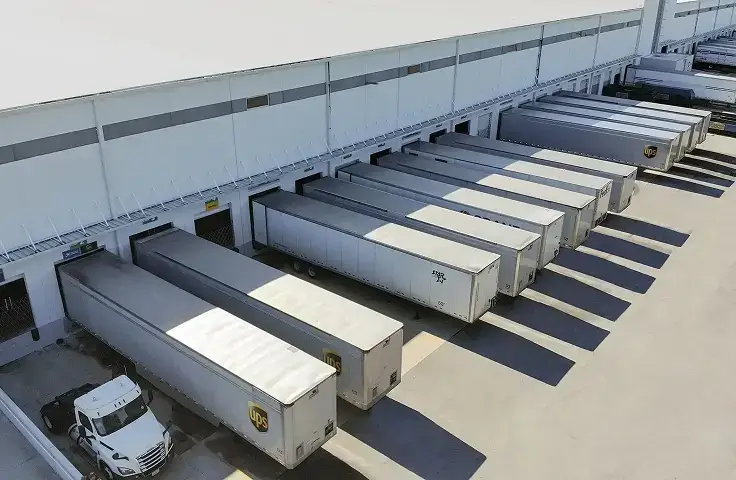It’s time to expand your horizons — literally! If you’ve been at the domestic eCommerce game for a while, setting your sights further is only normal. Although international shipping can be a real game changer, it requires careful consideration and provisions before making any kind of leap across any kind of pond.
In this article, we’ll prepare you for the big leagues by summarizing the top terms in international shipping. So, the next time your carrier or fulfillment center throws a million acronyms at you, you’ll at least know what they mean!
Incoterms
A word stemming from a distant alien language or a combination of “international commercial terms?” The world will never know… Just kidding — it’s the latter. (No comment about the aliens, though.)
Put simply, incoterms are a set of commercial terms published by the International Chamber of Commerce. They’re used in international commercial transactions or procurement processes to communicate what tasks, costs, and risks are required of the buyer and seller during an international shipment. Since they’re pre-defined and globally accepted, they should be valid and understood in all the international trade situations you find yourself in.
Wondering what the incoterms are? Allow us to break them down.
- CIP (Carriage and Insurance Paid): When the seller pays for freight and insurance, while the buyer assumes the risk of damage or loss.
- CPT (Carriage Paid To): When the seller pays for freight (but not insurance), while the buyer assumes the risk of damage or loss.
- FCA (Free Carrier): When the seller pays for transportation and insurance, from the warehouse to the transport hub. Once the goods are transported, the buyer is responsible for the subsequent shipment of goods and all of its associated risks.
- ExW (Ex Works): When the seller takes on very limited risk and responsibility. Essentially, they’re only responsible for packaging their products and preparing them for shipment. After that, the buyer is responsible for loading the products, preparing all export procedures, and paying all associated costs once the goods have been picked up.
- DAP (Delivery at Place): When the seller agrees to pay all of the costs associated with moving their products and risks suffering any losses on the shipment up to a specific location.
- DAT (Delivered at Terminal): When the seller takes the responsibility for arranging the loading and deliverance of their products but transfers the risk to the buyer once they have been unloaded. The buyer then becomes responsible for paying any import clearance, local taxes, or duties.
- DDP (Delivery Duty Paid): When the seller is responsible for all costs and risks associated with the delivery of their products, including customs duties and taxes. We actually have written an entire article about DDP — check it out here!
- DDU (Delivery Duty Unpaid): When the buyer is responsible for customs duties and taxes. (Check out the DDP article above more info!)
- CFR (Cost and Freight): When the seller pays for the transportation of their products to an agreed port. Once the products are onboard, the risk is transferred to the buyer. Limited to maritime freight.
- CIF (Cost, Insurance, and Freight): When the seller pays for the cost, insurance, and freight, but any risk of damage is transferred to the buyer once the products have been onboarded. Limited to maritime freight.
- FAS (Free Alongside Ship): When the seller is responsible for the costs and risks of delivering a shipment next to the buyer’s ship in a specified port. Once delivered alongside the ship, the buyer is responsible for unloading the shipment and all associated costs and risks. Limited to maritime freight.
- FOB (Free on Board): When the seller delivers the products to the ship and clears them for export. The buyer then assumes all costs and risks from that point on.
Customs Duty
If you’ve ever taken an international flight, you might recall being asked to fill out a customs declaration form. The purpose of the form is twofold — it allows U.S. Customs and Border Protection to 1) watch out for contraband and 2) collect customs duties for international goods.
For most people, the customs declaration form is their unofficial introduction to customs duties, a topic they will only need to worry about the next time they travel out of the country. But, as an eCommerce business owner with global aspirations, you’ll have to become a little more acquainted with the term.
Customs duty is a tax imposed on products delivered across international borders. Countries impose a customs duty in order to protect their economy, environment, and so forth. It’s also a way to regulate restricted or prohibited products from entering country boundaries.
The rates for customs duty vary, but they usually take into account the following factors:
- Declared Value: The amount the shipment is worth, according to the person who is shipping. This is reported to the carrier and is supposed to reflect how much it would cost to replace the shipment in the event it is lost or damaged. The declared value is the maximum amount the carrier is liable for.
- Country of Origin: Where the products or goods in a shipment were produced. Not to be confused with the country the package is being shipped from.
- HS (Harmonized System) Code: A 6-10 digit number used to classify products. It’s required for all international shipments and is used by customs to identify the products within a shipment in order to apply appropriate duties and taxes.
BOL
How could we forget the belle of the BOL? Short for bill of lading, the BOL is a crucial document when it comes to international trade, so much so that it’s a requirement for every single shipment.
BOLs serve the following functions:
- Acknowledgement of the receipt of a shipment
- Document of title to the goods
- Regulation of payment terms
- Verification of the origin, destination, and terms of a shipment
Essentially, the BOL contains all the information about a shipment and instructions from the seller to the carrier in order for it to be processed and proceed to its final destination..If a BOL is missing or inaccurate, your products may not be able to cross the border, which is why being diligent in the information you provide is so important.
And The Last Term You Need To Know…
Landed cost! This is the total value of the delivered shipment. It includes the original cost of the goods plus all taxes, fees, duties, insurance, and any other costs incurred from the very beginning to the very end of the shipment’s journey.
In a world where more and more shoppers are growing comfortable with placing international orders, being familiar with the ins-and-outs of international shipping is a great way to stay on top of eCommerce trends and draw a larger audience.
But, if all these acronyms, rules, and costs aren’t up your alley, you may want to consider using a fulfillment company that is an expert in international shipping, like us! Still have questions? Shoot us an email! We’ll be happy to help.





